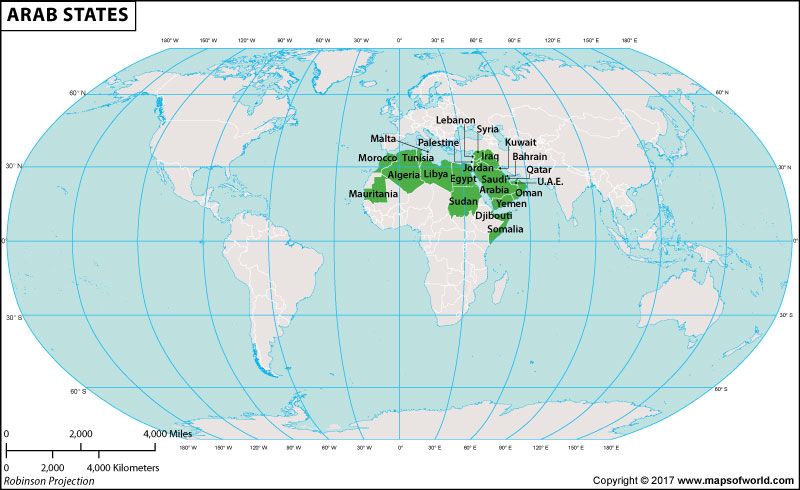What Are The Countries That Make Up The Arab States?

When we speak of the Arab States or the Arab World, we generally refer to 22 countries in the Arabian Peninsula, Northern Africa, and the Levant where the main language spoken is Arabic. The countries lie between the Atlantic Ocean and the Indian Ocean and are home to over 422 million people. To learn about the groups, check our Country Groups section.
The following countries make up the Arab States according to the United Nations Educational, Scientific, and Cultural Organizations (UNESCO) –
| Algeria | Morocco |
| Bahrain | Oman |
| Djibouti | Palestine |
| Egypt | Qatar |
| Iraq | Saudi Arabia |
| Jordan | Somalia |
| Kuwait | Sudan |
| Lebanon | Syrian Arab Republic |
| Libya | Tunisia |
| Malta | United Arab Emirates |
| Mauritania | Yemen |
General references to the Arab States or Arab Region usually are understood to mean these countries.
Often, though, when someone speaks or writes about the Arab World or the Arab Region, it is possible that they are referring to the Arab League and its member nations. The Arab League is voluntary association of 22 Arabic speaking nations. The only difference between the members of the Arab League and the list of Arab States as provided by the UNESCO is that Comoros replaces Malta as a member nation of the Arab League. The Arab League was founded on March 22, 1945 in Cairo, Egypt. The six founding members were – Kingdom of Egypt, Kingdom of Iraq, Lebanon, Transjordan (later named Jordan), Saudi Arabia, and Syria. The league provides a forum for the member nations to coordinate closely in matters of defense, economic activity and trade, educational, scientific, and cultural exchanges.
There are a number of countries apart from those that feature on UNESCO’s list where Arabic is spoken. It is one of the official languages in Chad, Comoros, Eritrea, Israel, and South Sudan. In countries such as Djibouti and Somalia too, Arabic is one of multiple official languages and languages such as French and Somali are widely spoken.
Any explanation of the Arab States falls short without the mention of Arab nationalism and the bonds of socio-cultural unity that hold the people of these countries together. The Arab Spring revolution that took place between 2010 and 2012 is a perfect example of how the societies in these countries reflect each other. The civil uprising primarily impacted Tunisia, Libya, Egypt, Yemen, Iraq, and Syria but also resounded across Morocco, Algeria, Bahrain, Jordan, Lebanon, and other Arab countries.
Related Maps and Articles:




